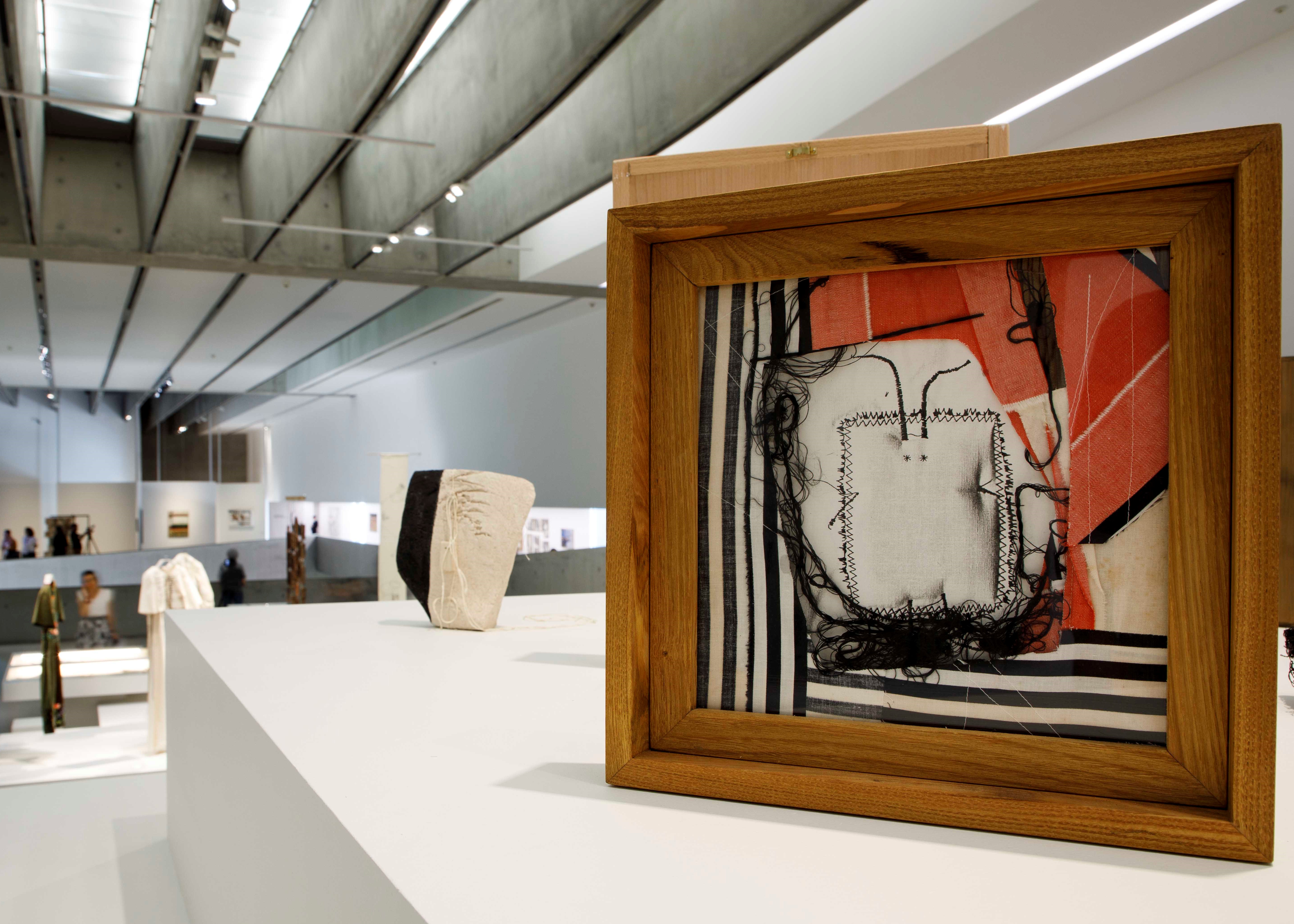
 Patricia Gatto Puglia
Patricia Gatto Puglia
Italian lifestyle and fashion: Maria Lai made art of the infinite threads that unite us
- WTI Magazine #128 Jun 20, 2020
-

 Patricia Gatto Puglia
Patricia Gatto Puglia
The art of Maria Lai feels relevant in a time when many of us are seeking symbols of unity. This woman of Sardinia, an important voice in Italian postwar contemporary art, wove a message of universality into all of her work. Each piece told a story of connection and shared human experience.
Over Lai’s almost 70-year career (Lai died at 94 in 2013), she made art of the rituals, objects, and traditional chores of daily living. She brought them to life as forms of individual creativity. Weaving and embroidery – crafts the Sardinians have raised to an art over centuries – figured heavily in Lai’s work. Many of her pieces include the recurring motif of threads, interwoven and infinite in number, interpreted by Lai as material that unites us and also leads us in different directions, to explore and grow.
Lai was a multifaceted artist. She was a painter, sculptor, sewer, carver, poet, writer of fairytales and stories, and teacher. Introspective and reserved by nature, she was nonetheless a friend and mentor to many, including fashion designer Antonio Marras, a fellow Sardinian, whose collections and fashion narrative have been greatly influenced by Lai. She was equally nourished by the friendship and knowledge of academics, writers and artists.
Her creations – books, threads, looms
Lai’s work was wide-ranging. She is well known for her libri cuciti – sewn books of fabric pages embellished with collages and embroidered words, most indecipherable, with threads spilling from the edges. Some books were inspired by Sardinian fairytales – including appearances of Janas, the mischievous little fairies said to inhabit Sardinian caves and spin intricate cloths with sparkling threads. Other books are stories of her own making. Embroidered bedsheets were raised to an art form by Lai and mounted as huge wall hangings. From a distance, the words stitched onto the sheets seem readable, but they are not. The effect is a secret language the viewer strives to understand. The series’ inspiration was Lai’s memory of her grandmother mending sheets; Lai imagined her writing stories to her grandchildren as she sewed. Looms (telai) were another recurring motif. Lai’s were abstract compositions – sculptures mounted on deconstructed canvases or freestanding. Threads, painting, weaving, and other objects intertwined, hinting at age-old rhythms.
Lai’s art is not easily categorized. She is known as a relational artist, one who communicates through collective experiences. She has also been loosely tied to the Arte Povera movement of the late 1960s and 1970s during which artists rejected traditional mediums and used everyday materials in their art. There are elements of each art term in Lai’s work. But well beyond labels, her art was a reflection of her personal experience and ties to her beloved Sardinia.
Her early life
Lai was born on September 27, 1919 in Ulassai, a small town 800 meters above sea level in eastern Sardinia. She was not healthy as a young child so was sent at the age of three to live with a childless aunt and uncle in Cardedu, closer to the coast. Her childhood was isolated but far from unhappy. Lai’s bedroom became a canvas for her first attempts at art. She drew continually with carbon on the room’s whitewashed walls – outlines of the people, animals, and countryside that surrounded her. When she had filled the walls with drawings, the room was repainted, and she began to draw again.
Lai returned to Ulassai at nine and started elementary school. Secondary school in Cagliari, about 70 km south of Ulassai, followed but she struggled with her studies until the Sardinian writer Salvatore Cambosu, her professor of Latin and Italian, gave her confidence that she could master the languages (he instructed her to read verse aloud and just follow the rhythms) and also instilled in her a love for poetry and literature. In 1939, just as Italy was about to enter World War II, Lai left Sardinia to begin her formal education in art, first in Rome and then in Venice where she attended the Accademia di Belle Arti. These were bold moves for a young woman of her time.
Building her profile
In the years that followed, Lai lived between Venice, Rome, Bologna and Sardinia. By 1957, she was back in Rome where she mounted her first major exhibit of India ink paintings and portraits of friends, relatives, and women working, of shepherds and landscapes. The exhibit was very well received, yet Lai retreated from the art world for a decade.
She reemerged in 1971 with another exhibit in Rome. It was a turning point Lai. She had stopped working in paint in 1961 and had begun to use the materials that had previously been the subject of her images – wood, bread, cloth, thread. Lai exhibited her first telai (looms) made from wires, scraps of fabric and rugs, wood and everyday objects. The period from the 1970s onward was the most prolific of Lai’s career.
When a blue ribbon unites a town…
Lai’s best-known installation came in 1981 in the form of an epic immersive experience she called Legarsi alla montagna – Bind to the Mountain. Lai had been asked to design a war memorial to honor the fallen of Ulassai; she proposed a living monument instead. She envisioned the townspeople literally tying Ulassai to the mountain that overlooked the town. How? A 17-mile-long “blue ribbon,” made from old jeans, to be passed from house to house, street to street, knotted and embellished with Pane Pintau (Sardinian bread), and then bound to the top of Ulassai’s steep Monte Gedili. The idea of a communal act of unity and friendship stirred interest, but also rancor and old rivalries as Lai suspected it would. It took more than a year to negotiate and orchestrate the project. Lai’s inspiration was a Sardinian legend about a shepherd girl who had taken cover in a cave during a storm but then stepped outside to clasp and follow a blue ribbon that was being carried by the wind. The townspeople helped her as she escaped tragedy when the cave collapsed behind her.
Critical acclaim
Lai’s work received excellent reviews during her lifetime, but it was after her death that her art received mainstream recognition. In 2019, in celebration of the centenary of her birth, Rome’s Museo Nazionale delle Arti del XXI Secolo (MAXXI), staged a six-month retrospective of Lai’s work, Tenendo per mano il sole – Holding the sun by the hand, with the exhibit taking its name from one of Lai’s first Sewn Fairytales. Also commemorating her birth was a dual exhibit, Trama doppia (Double Plot), featuring the art of Lai and Antonio Marras at the National Museum of Medieval and Modern Art of Basilicata. In 2018, the Palazzo Pitti in Florence staged Il filo e l’infinito -- Infinite Thread, and in 2017, Lai was exhibited at both the Venice Biennale and Documenta 14.
Maria Lai’s call to continually legare e collegare, to tie and connect, to follow the rhythms of life and verse, provides some serenity in a world that seems to have been turned on its head.